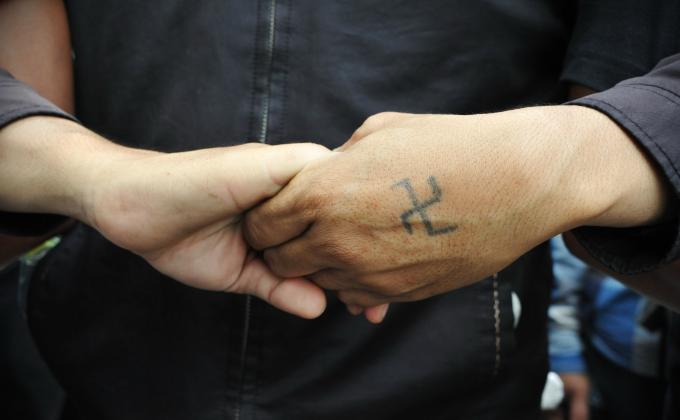Over the last weeks, the world's media, particularly in the west, has been consumed by the terrorism alerts issued about Yemen, including the closure of many western embassies and evacuation of personnel. The United States (US) issued the alert because they, allegedly, intercepted communications between al Qaeda (AQ) leader Ayman al-Zawahiri and Nasir al-Wuhayshi, the leader of Yemen-based al Qaeda in the Arabian Peninsula (AQAP), which gave them reason to believe that a major attack on one of the US embassies was imminent.
Much has been said about the gravity of the threats, about the efficiency of the response and how the level of disruption brought about by the public announcement of the threats is, in itself, a major component of the impact of terrorism. Fear and upheaval is a major part of the effect that terrorists are looking for. And fear and upheaval is what happened; even without the attack itself.
One element that has been lacking in the debates, comments, press reports and analyses is the character of AQAP as an organisation in Yemen. In the mainstream press there seems to be an assumption that the "al Qaeda" affiliation of AQAP is indicative of the international nature of the organisation. That, because it uses the AQ name, its agenda is international and its aims and thus the targets, are international in nature. It is important however to remember AQAP's primary agenda.
A recent report by the National Consortium for the Study of Terrorism and Responses to Terrorism (START) provides some interesting figures on AQAP that shed light on the organisation's priorities and helps us to analyse its “raison d’être”. Based on their Terrorism Database, START estimates that AQAP carried out 320 attacks between 2009 and 2012, and that 316 of these attacks took place within the borders of Yemen. The victims of these attacks were almost always Yemeni nationals and almost half of the attacks targeted the military in an on-going campaign for control of territory.
These figures seem to indicate that AQAP has a largely national agenda, with a clear idea of a national enemy, based on national considerations and national grievances. Despite their sophisticated propaganda apparatus, which mostly deals with international grievances and the group's global strategy, these concerns play second fiddle in practice. Whether right or wrong, they are, first and foremost, fighting the Yemeni army over a national issue. This is, in a certain sense, similar to what is taking place in a number of other Muslim majority countries, including Syria.
The situation becomes more complicated however, since the organisation has affiliated itself to the AQ family. This obviously has severe and far-reaching implications for their international position and responses to their activities. AQAP has very effective bomb makers and communication experts within its ranks, is the creator of the Inspire magazine that is targeted at Western audiences, and, although seldom, has undertaken (or attempted) attacks against western targets on at least four occasions in the past years. These attacks include the December 2009 attempt by Umar Farouk Abdulmutallab to detonate explosives on Northwest Airlines Flight 253 en route to Detroit and the 2010 plot where explosives were hidden in printer cartridges on cargo planes bound for the US. While such attacks (or attempted attacks) have been rare, their innovative nature and potential impact have resulted in a high international profile for AQAP. And such an international profile within the AQ family leads to intense monitoring by foreign intelligence services, forceful responses such as drone strikes (tactics which have previously killed senior AQAP members including Anwar al-Awlaki, Samir Khan and Said al-Shihri), and high levels of alert in cases like last week.
While the group loudly espouses their international goals, including the expulsion on non-Arabs from the Arabian Peninsula and the establishment of an Islamic Caliphate, this often overshadows the fact that, in operational terms, the vast majority of their targets have been localised within Yemen. Based on such evidence it is thus fair to argue that AQAP primarily has a local agenda, bases itself on local grievances and recruits within the local population with the promise of change for the local people.
Of late, some of the Jihadi groups within other Muslim majority states have learned from AQAP's “mistakes”. The conglomerate of Ansar al-sharia groups in a number of northern African countries has learned the strategic lesson that it is sometimes better not to use the AQ brand. There seems to be a conscious effort to stay under the radar of the international community – and the US in particular – for as long as possible. Furthermore, these new groups do not want to use the AQ moniker but another, new name. As Daveed Gartenstein-Ross argues in an ICCT Research Paper, there appears to be a deliberate intent to prioritise dawa (or charity work) to gain support and win over followers. This view is also support by two letters written by Nasir al Wuhayshi (AQAP’s emir and also al Qaeda’s general manager) in May 2012 and August 2012, which urges al Qaeda in the Islamic Maghreb (AQIM) to bide their time, to provide services to the people and to be patient in implementing sharia, or Islamic law. The intention is that when strong enough, only then should they turn to jihad. This is the real threat. It comes with a new name, a new brand and a new strategy. AQ strategists recognise that al Qaeda is a brand that attracts drones and huge scrutiny from foreign intelligence services and thus it is better to rebrand and re-strategise.
This hybrid nature seems to be the reinvention of the AQ brand: AQ 3.0. This presents a major concern for agencies specialising in counter-terrorism. It almost makes one nostalgic about the good old days when counter-terrorism was simpler because AQ was still a more tangible, hierarchical and understood organisation.
If policymakers want to solve the international problem of terrorism they need to really understand the local dynamics and the drivers of local public support. Based on such analyses, a comprehensive CT strategy should be implemented with input from local actors and knowledgeable civil society. A sole analysis of the international position of AQAP will not serve as a solid basis for a solution effective response. Without understanding the drivers and the motivations behind youth joining AQ-affiliates there will be no solution. AQAP is, however we frame it, rooted in national grievances and so the solution is to be found in the national political landscape.








